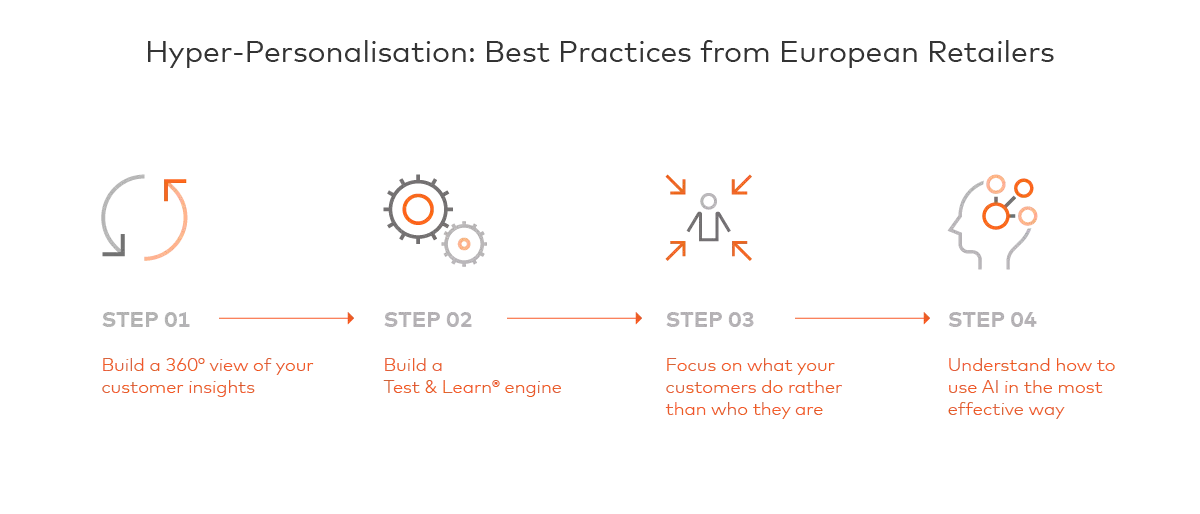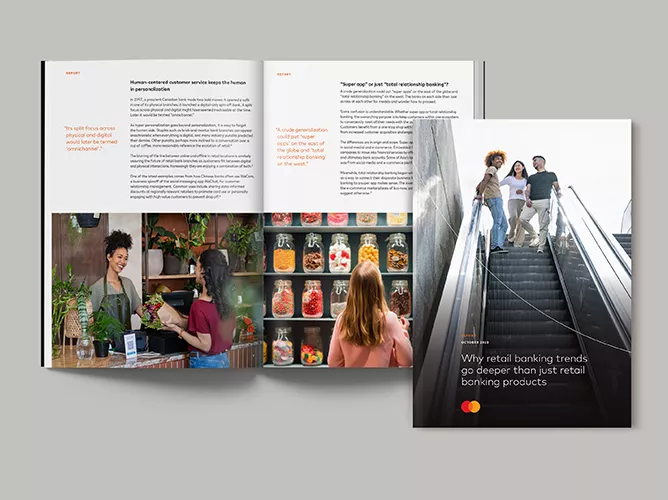Test & Learn® as a key stepping stone toward AI-enabled personalisation
Many European retailers are engaging (or thinking about engaging) on a migration from mass-message marketing to personalised engagement. An initial approach may be to look for Artificial Intelligence (AI) solutions to do that. Although AI has a key role to play, retailers should recognise that to be truly personalised requires a journey involving a deep understanding of what your customers want through a test and learn approach.
“Cast a wide enough net, and hopefully we will catch some fish!”
When it comes to engaging with their customers, European merchants have historically performed mass-messaging campaigns. Marketing and communications campaigns are typically carried out through one-size-fits-all, generic mass messaging: “cast a wide enough net, and hopefully we will catch some fish.”
The problem with this approach is clear: not all customers are the same. A one-size-fits-all approach generally produces limited results and risks repelling customers if they regard it as a form of spam.
Technology promises to change this. In particular, AI is the buzzword on everyone’s mind. Many CRM and marketing organisations have realised this, and they are looking for or already trialing solutions.
The holy grail of personalised customer engagement
The AI promise in terms of customer engagement is to enable an organisation to deliver the right message to the right customer through the right channel at exactly the right time–and to do all of this in an automated way.
While this “holy grail” is what businesses should strive for, getting there is not an overnight switch, but rather a step-based journey of increased understanding of their customer base in order to deploy the right approach to the right audience. Specifically, two important tenets of personalisation must be defined before implementing marketing initiatives such as personalised offers or coupons.
Firstly, not every customer will react positively to receiving fortnightly discount coupons for the products that AI solutions have identified as most relevant. Indeed, not everyone is interested in coupons (even if they like the products), while others may have bought the product without the coupon in which case it is not creating incremental sales.
Secondly, no matter how powerful and well-trained the AI engine is, it still requires inputs: which offers or communication options to choose; which customers to address; how to measure success and incremental sales.

The journey to get there: test different methods; learn from informed customer reactions
The journey to get there requires several steps of rigorous analytics to better understand the customer base and ensure AI and other approaches are deployed in an optimal way. Forward-thinking European merchants are using business experimentation technology, which allows them to confidently identify winning strategies.
For instance, one European retailer saw significant improvements in customer loyalty by progressively optimising customer segmentation and deploying personalisation technology. The retailer started testing the methods they were using to reach their customers, including type of messaging, channel, and communication frequency. The retailer segmented its customers based on how they responded to these different approaches. For example, the organisation established that only 15% of their customer base is responsive to promotional emails. For this segment, deploying AI models able to personalise the promotions and frequency clearly would be very valuable, while less impactful for other segments. Based off of these findings, the retailer built differentiated AI strategies for each bespoke segment. One strategy the retailer used was creating email campaigns for loyal, online customers to promote in-store events and drive store traffic.
Hyper-personalisation: best practices from European retailers
Build a 360° view of your customer insights
Too often, a retailer’s customer insights sit in different systems, and most of it is not used to inform business strategy. If not already in place, building a 360° customer view should be the bedrock for more informed and personalised customer engagement in the future.
In fact, the most successful way to do so is with the end goal in mind–not linking data for the sake of it, but doing so to deliver a differentiated engagement with customers.
Build a Test & Learn® engine
Customer behaviour is extremely complex to predict without a well-structured scientific approach. Therefore, to derive the most value from data insights, an organisation needs to put in place a testing capability combining analytical tools, governance processes, and a testing mindset.
Focus on what your customers do rather than who they are
It is critical to understand your customers; not their age or postal code, but rather how they respond to different forms of engagement. Start with all the ways you can engage customers (email, in-store, digital, etc.) – and then segment customers based on how they react to these different media.
What transpires is that every business is different and the dimensions vary greatly across organisations. Some identified that online customers respond very differently from their in-store customers. For others what really characterised their customers was the timing and composition of their basket.
Understand how to use AI in the most effective way
Following steps 1-3 will enable organisations to optimise their AI “engines” to the right customer segments with the right parameters, creating a significant competitive advantage. In many cases, informed segmented customer outreach strategies have proven to double response and more than double revenues generated by customer engagement programmes.
Data-driven, optimised segmentation and personalisation represent the new frontier in customer engagement and brand communication. European merchants are increasingly aware of the benefits that these best practices can generate, and the migration from mass messaging need not be painful. While any change can engender growing pains, a well-structured process can help bridge the gap to achieving hyper-personalisation and ensure a smooth transition for maximised business outcomes.
Ask Octavian Puzderca
Questions on this article? Reach out to Octavian Puzderca to learn more about effective customer engagement.








